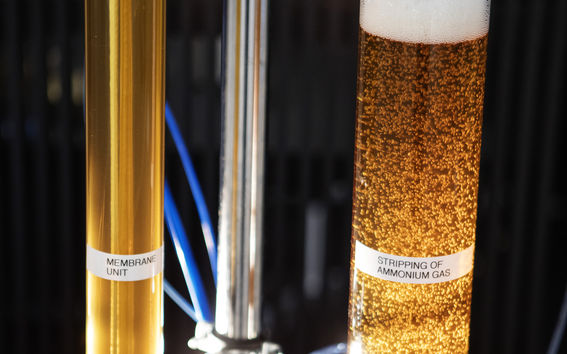Background of the project

Municipal wastewater contains nitrogen, phosphorous, organic substances and micronutrients. By recycling nutrients in the wastewater into fertilizer use it could be possible to reduce consumption of commercial fertilizers. Law on fertizer products govern fertilizer produced from wastewater and sludge so that the hygienic quality must be high, for instance. Heavy metal content, which have limited the use of wastewater based fertilizers, has decreased over the years. Nowdays organic harmful substances in wastewater have surfaced as a new concern. It has been noted that many of these substances have negative effects on organisms and that they are very permanent in natural environment. Futhermore these products suffer from imago drawback. Currently nutrients in wastewater do not circulate efficiently to reuse. There could be limitations for their use in the future regarding organic harmful substances.
Phosphorous reserves that are available with current technology are estimated to last approximately next 90 years with current consumption. Currently nutrients drift into the soil and bodies of water and further into the bottom of the sea, where it is hard to utilize. In May 2014 EU commission added phosphorous to the list of 20 other critical raw materials. Nitrogen is not critical raw material in any sense due to its practically unlimited supply from the atmosphere. Nitrogen recovery from wastewate is based on the idea of saving energy. Current nitrogen removal process consumes significant portion of the energy needed in the wastewater purification process. In addition, the nitrogen used in fertilizers and industry is produced with Haber-Bosch -method where ammonium nitrogen is produced from the nitrogen from the atmosphere and hydrogen separed from water with electrolysis. The process consumes approximately 10 kWh for every kilogram of nitrogen produced. The energy used to produce nitrogen has been estimated to be approximately 2 % of the world's energy consumption. In Paris climate conference in December 2015 an agreement was made to keep the climate warming within 1,5 degrees. The objective is to be carbon neutral by 2100. Long term goal is to reach reduction of 80 – 95 % in energy consumption by 2050. An energy efficient nitrogen cycle would be a significant step towareds reduced energy consumption. The phosphorous in municipal wastewater could cover approximately a tenth of phosphorous currently used as fertilizer. In a similar fashion, nitrogen from municipal wastewater could replace approximately 6 % of industrially produced ammonium nitrogen.